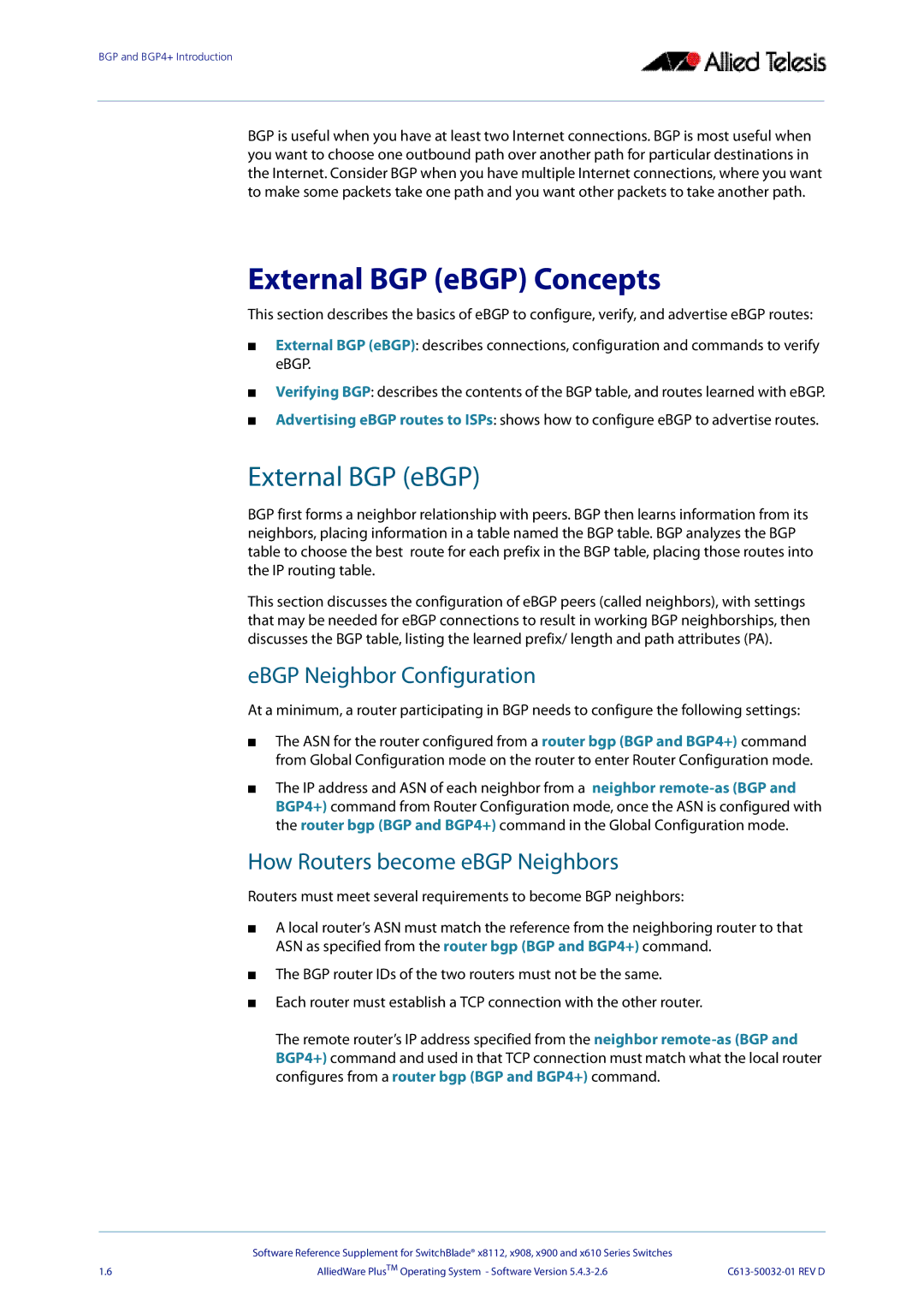
BGP and BGP4+ Introduction
BGP is useful when you have at least two Internet connections. BGP is most useful when you want to choose one outbound path over another path for particular destinations in the Internet. Consider BGP when you have multiple Internet connections, where you want to make some packets take one path and you want other packets to take another path.
External BGP (eBGP) Concepts
This section describes the basics of eBGP to configure, verify, and advertise eBGP routes:
■External BGP (eBGP): describes connections, configuration and commands to verify eBGP.
■Verifying BGP: describes the contents of the BGP table, and routes learned with eBGP.
■Advertising eBGP routes to ISPs: shows how to configure eBGP to advertise routes.
External BGP (eBGP)
BGP first forms a neighbor relationship with peers. BGP then learns information from its neighbors, placing information in a table named the BGP table. BGP analyzes the BGP table to choose the best route for each prefix in the BGP table, placing those routes into the IP routing table.
This section discusses the configuration of eBGP peers (called neighbors), with settings that may be needed for eBGP connections to result in working BGP neighborships, then discusses the BGP table, listing the learned prefix/ length and path attributes (PA).
eBGP Neighbor Configuration
At a minimum, a router participating in BGP needs to configure the following settings:
■The ASN for the router configured from a router bgp (BGP and BGP4+) command from Global Configuration mode on the router to enter Router Configuration mode.
■The IP address and ASN of each neighbor from a neighbor
How Routers become eBGP Neighbors
Routers must meet several requirements to become BGP neighbors:
■A local router’s ASN must match the reference from the neighboring router to that ASN as specified from the router bgp (BGP and BGP4+) command.
■The BGP router IDs of the two routers must not be the same.
■Each router must establish a TCP connection with the other router.
The remote router’s IP address specified from the neighbor
| Software Reference Supplement for SwitchBlade® x8112, x908, x900 and x610 Series Switches |
|
1.6 | AlliedWare PlusTM Operating System - Software Version |
